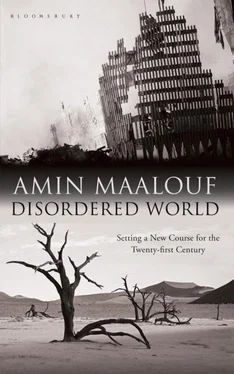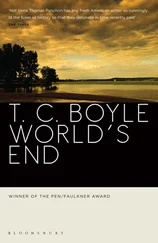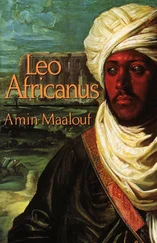When radical ideas like those of the monk Savonarola in fifteenth-century Florence began to spread, Rome opposed them and its authority allowed it to put an end to them once and for all: the unfortunate Savonarola ended up being burned at the stake. Closer to our own time, and in a different vein, when Catholics in Latin America were tempted in the 1960s by liberation theology and some Colombian priests such as Camilo Torres found themselves under arms alongside Marxists, the church firmly stamped this out. I am not going to discuss the content of this theology, any more than I am going to consider Savonarola’s; what strikes me as significant is how efficiently the papacy cut short any such excesses.
In the Muslim world, a would-be Savonarola or Camilo Torres could not have been checked in the same way. In the absence of a muscular ecclesiastical authority with recognised legitimacy, the most radical ideas regularly spread among the faithful and could not be contained. Today as in the past, any social or political challenge can make free use of religion to attack the established order. Religious leaders in different Muslim countries are generally unable to oppose it, since they are appointed by those in power and are therefore literally in their pay, and consequently have only limited moral credibility.
In my view, it is the absence of a papal-style institution capable of drawing a line between the political and religious which explains the drift that affects the Muslim world, rather than a ‘divine directive’ creating confusion between the two spheres.
One might wonder if it doesn’t come to the same thing, but I don’t think so. At least not if we still have hopes of a future for humanity.
It is not unimportant to understand whether this lack of separation between politics and religion results from unchanging dogma or the contingencies of history. For those, like me, who persist in trying to find a way out of the global impasse we have got ourselves stuck in today, it is important to underline that the difference between the trajectories of the two ‘rival’ civilisations was determined not by an immutable celestial injunction but by human behaviour which can change, and by the historical course of human institutions.
All these institutions are human (I use that adjective purely descriptively, without making any assumptions about their spiritual function). The papacy was not established by the Gospels: there is no mention in them of a sovereign pontiff, of course, given that the title belonged to a pagan dignitary. Likewise, the caliphate was not established by the Qur’an, in which just two men are explicitly referred to by the term ‘caliph’ (meaning ‘heir’ or ‘successor’). The first of these was Adam, to whom God announced that he was giving the earth — and it is clear from the context that the world was thus being entrusted to the whole of humanity. The second was a historical figure to whom the Creator addressed these severe words: ‘I have named you caliph on this earth so that you govern with justice; do not allow yourself to be guided by your passions, which will lead you from the way of God. Those who depart from it will suffer a terrible punishment for having forgotten Judgement Day.’ The ‘caliph’ addressed thus was none other than King David.
Another paradoxical aspect of the papacy is that this eminently conservative institution has allowed progress to be maintained.
I shall illustrate this with an example which may appear trivial: when I was a child, a Catholic woman could not go to mass without covering her head and shoulders. Things had always been thus, and no believer, whether a serving girl or a queen, was allowed to transgress the rule, which the priests applied with zeal and sometimes humour. That makes me recall the priest who approached one of his flock and gave her an apple. When the young woman expressed surprise, he told her that it was only after tasting the apple that Eve realised that she was naked.
The poor woman was certainly not naked; all she had done was wear her long hair down, but clothing requirements could not be broken — until the moment in the early 1960s when the Vatican decided that henceforth women were allowed to attend church without a veil. I suppose that some people must have been irritated or even outraged by a decision that ran counter to an ancient tradition dating all the way back to Saint Paul. He had after all written in his first epistle to the Corinthians:
For a man indeed ought not to cover his head, forasmuch as he is the image and glory of God; but the woman is the glory of the man. For the man is not of the woman; but the woman of the man. Neither was the man created for the woman; but the woman for the man. For this cause ought the woman to have power on her head because of the angels.
Nonetheless, overnight these words from another age were deemed obsolete; no one tried to insist that Catholic women cover their heads, and it is reasonable to suppose that this advance will not be called into question.
Let me repeat because this is the point I want to make: the popes may have restrained any relaxation of the rule on clothing for nineteen centuries, but from the moment when they judged that this position no longer had any justification, from the moment when they finally took stock of how attitudes had changed, they proceeded to validate the change, so to speak, rendering it virtually irreversible.
In the history of the West, the institution of the church has often functioned in this way, contributing to the material and moral advance of European civilisation, and yet all the while attempting to restrain it. Whether in the domain of science, economics, politics or social behaviour, and especially in matters of sexuality, the papacy’s attitude has followed the same course. At the start, the church digs in, applies the brakes, fulminates, threatens, condemns and forbids. Then, after time (sometimes centuries) has passed, it reviews, re-examines and moderates its position. Next, with some reluctance, it accommodates itself to the verdict of human societies. The change is validated — codified, in a manner of speaking, on the register of permitted behaviour. From that moment on, there is no further tolerance of zealots who might wish to reverse things.
For centuries, the Catholic church refused to believe that the earth was round and orbited the sun. And, when it came to the origin of species, it initially condemned Darwin and evolution. Today, it would crack down on any of its bishops who interpreted the holy texts in too literal a manner, as some Arabic ulemas and American evangelists do.
The prevailing mistrust in the Muslim tradition, as in the Protestant one, of a centralising religious authority is perfectly legitimate and thoroughly democratic in its inspiration, but it has a disastrous side-effect: without that intolerable centralising authority, no progress can be irrevocably recorded.
Even when believers have lived their faith for decades in the most generous, enlightened, tolerant fashion possible, they are never completely beyond risk of a ‘relapse’, never shielded from some zealous interpretation coming along to sweep away their gains. Again — whether in the domain of science, economics, politics or social behaviour — something a benevolent fatwa authorised yesterday, a mean-spirited fatwa can forbid today with extreme rigour. The same controversies come up again and again over what is and is not permitted, and what is pious and what impious. Without a supreme authority, no advance is definitively validated, and no opinion expressed in past centuries is definitively marked as obsolete. For every step forward there is a step back, so much so that it becomes impossible to tell what is forward and what is back. The door is perpetually open to all forms of escalation, extremism and regression.
Читать дальше












